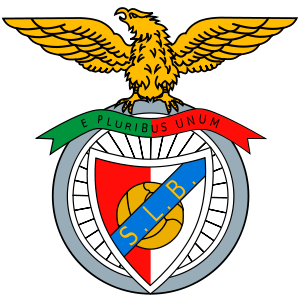E pluribus unum

E pluribus unum (pronounced /ˈiː ˈplʊərɨbəs ˈuːnəm/; Latin /ˈeː ˈpluːrɪbʊs ˈuːnũː/), Latin for "Out of many, one", is a motto requested by Pierre Eugene du Simitiere (originally Pierre-Eugène Ducimetière) and found in 1776 on the Seal of the United States, along with Annuit cœptis and Novus ordo seclorum, and adopted by an Act of Congress in 1782.[1] The phrase is similar to a Latin translation of a variation of Heraclitus' 10th fragment, "Out of all things one, one out of all things." A variant of the phrase was used in Moretum, a poem attributed to Virgil but with the actual author unknown. In the poem text, color est e pluribus unus describes the blending of colors into one. St Augustine used a variant of the phrase, ex pluribus unum, in his Confessions. At the time of the American Revolution, the exact phrase appeared prominently on the title page of a popular periodical, The Gentleman's Magazine,[2][3][4] which collected articles from many sources into one "magazine".
Never codified by law, E pluribus unum was considered a de facto motto of the United States until 1956 when the United States Congress passed an act (H.J. Resolution 396), adopting In God We Trust as the official motto.[5] Seth Read of Uxbridge, Massachusetts, was said to have been "instrumental" in the addition of "E Pluribus Unum" to U.S. coins.[6] The first coins with this motto were dated 1786 and struck under the authorization of the State of New Jersey by Thomas Goadsby and Albion Cox in Rahway, New Jersey[7]. The motto had no New Jersey linkage but was likely an available die that had been created by Walter Mould the previous year for a failed federal coinage proposal[8]. Walter Mould was also authorized by New Jersey to strike state coppers with this motto and did so beginning in early 1787 in Morristown, New Jersey.
While Annuit cœptis and Novus ordo seclorum appear on the reverse side of the great seal, E pluribus unum appears on the obverse side of the seal (Designed by Charles Thomson), the image of which is used as the national emblem of the United States, and appears on official documents such as passports. It also appears on the seal of the President and in the seals of the Vice President of the United States, of the United States Congress, of the United States House of Representatives, of the United States Senate and on the seal of the United States Supreme Court. E pluribus unum, written in capital letters, is included on most U.S. currency, with some exceptions to the letter spacing (such as the reverse of the dime). It is also embossed on the edge of the dollar coin. (See United States coinage and paper bills in circulation).
Originally suggesting that out of many colonies or states emerge a single nation, in recent years it has come to suggest that out of many peoples, races, religions and ancestries has emerged a single people and nation – illustrating the concept of the melting pot.[9]
Contents |
Usage on coins
According to the U.S. Treasury, the motto E pluribus unum was first used on U.S. coinage in 1795, when the reverse of the half-eagle ($5 gold) coin presented the main features of the Great Seal of the United States. E pluribus unum is inscribed on the Great Seal's scroll. The motto was added to certain silver coins in 1798, and soon appeared on all of the coins made out of precious metals (gold and silver). In 1834, it was dropped from most of the gold coins to mark the change in the standard fineness of the coins. In 1837, it was dropped from the silver coins, marking the era of the Revised Mint Code. An Act of February 12,1873 made the inscription a requirement of law upon the coins of the United States. E pluribus unum appears on all coins currently being manufactured, including the Presidential dollars that started being produced in 2007, where it is inscribed on the edge along with "In God We Trust" and the year and mint mark.
After the Revolution, Rahway, New Jersey became the home of the first national mint to create a coin bearing the inscription E pluribus unum.
In a quality control error in early 2007 the Philadelphia Mint issued some one-dollar coins without E pluribus unum or "In God We Trust" on the rim; these coins have already become collectibles.
The new 2010 penny features a new design on the back, which displays the phrase "E Pluribus unum" in larger letters than in previous years.
Other Usages
The motto E pluribus unum is also used by the Portuguese soccer team Sport Lisboa e Benfica since February 28th 1904. Nowadays Sport Lisboa e Benfica has over 200000 regular members (monthly quota paying members). According to the Guinness World Records it is the largest football club in the world member-wise.
 E pluribus unum included in the Stadium main entrance. |
 E pluribus unum included in the club coat of arms. |
See also
- Bhinneka Tunggal Ika
- Unity in diversity
References
- ↑ http://www.greatseal.com/mottoes/unum.html
- ↑ "The Gentleman's Magazine". Encyclopedia Britannica. http://www.britannica.com/EBchecked/topic/229387/The-Gentlemans-Magazine.
- ↑ The Gentleman's Magazine and Historical Chronicle. 1783. http://books.google.ca/books?id=VEgDAAAAMAAJ&pg=PR4&lpg=PR4&dq=%22The+Gentleman's+Magazine%22+%22e+pluribus%22&source=bl&ots=mrsV1SRFuJ&sig=dDakia6CteWUb34_DygMmr0dtNQ&hl=en&ei=wBf-S7GuBsH68AaimN3BDQ&sa=X&oi=book_result&ct=result&resnum=5&ved=0CCkQ6AEwBDgK#v=onepage&q=%22The%20Gentleman's%20Magazine%22%20%22e%20pluribus%22&f=false.
- ↑ "The Gentleman's Magazine and Historical Chronicle". 1747. http://www.bodley.ox.ac.uk/cgi-bin/ilej/image1.pl?item=page&seq=4&size=1&id=gm.1747.x.x.17.x.x.u102.
- ↑ Congressional Record
- ↑ ""e pluribus unum"". www.treas.gov. http://www.treas.gov/education/faq/coins/portraits.shtml#q7. Retrieved 2007-09-29.
- ↑ Q. David Bowers. Whitman Encyclopedia of Colonial and Early American Coins. (Atlanta: Whitman Publishing, 2009) p. 129
- ↑ Walter Breen. Complete Encyclopedia of US and Colonial Coins. (New York: FCI Press; Doubleday, 1998) p. 78
- ↑ "E Pluribus Unum?". TIME magazine. June 7, 1976. http://www.time.com/time/magazine/article/0,9171,947739,00.html. Retrieved 2008-10-09.
External links
|
|||||||||||||||||